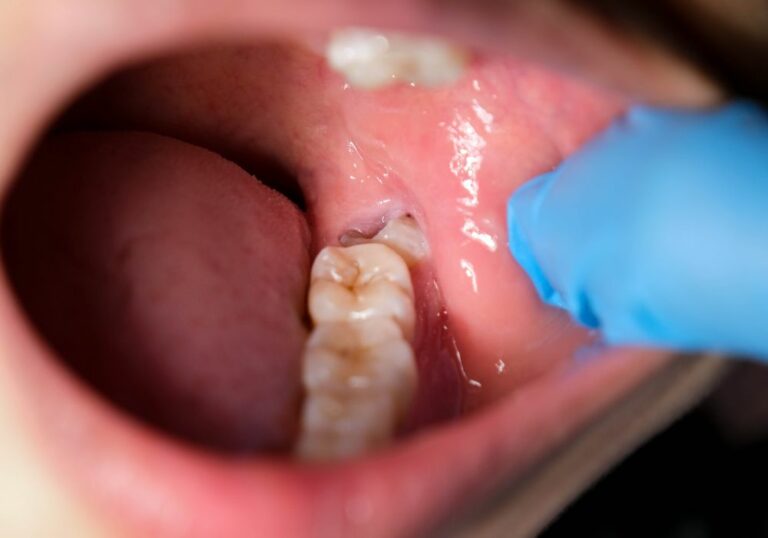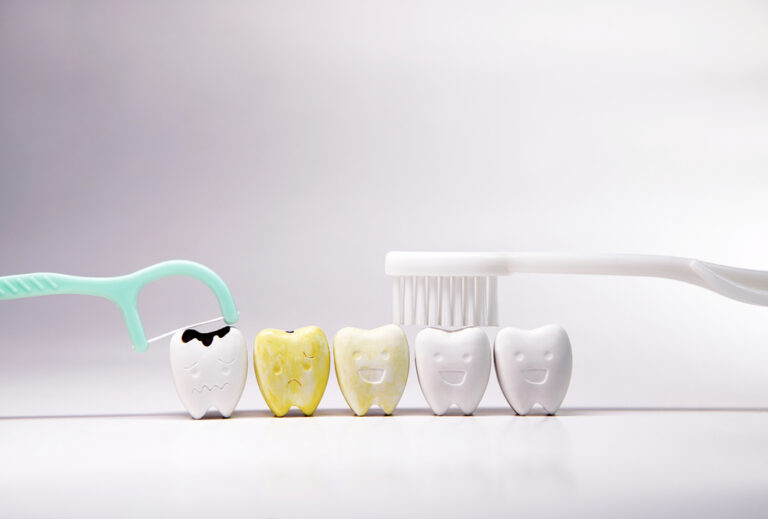If you’ve ever wondered how a gold tooth is made, you’re not alone. Many people are curious about the process of creating this unique dental prosthesis. Gold teeth have been around for centuries, and they remain a popular choice for people who want to make a statement with their smile.
The process of making a gold tooth is similar to making a gold crown or bridge. It involves taking an impression of the tooth or teeth that need to be restored and creating a mold from that impression. The mold is then used to create a custom-fit gold tooth that is designed to match the shape and size of your natural teeth.
Gold teeth can be made in a variety of different styles, from simple caps that cover the entire tooth to more elaborate designs that feature intricate patterns and designs. Some people choose to have their gold teeth engraved with designs or even set with diamonds or other precious stones. Whether you’re looking for a simple gold tooth or a more elaborate design, the process of making a gold tooth is a fascinating one that requires skill and expertise.
History of Gold Teeth
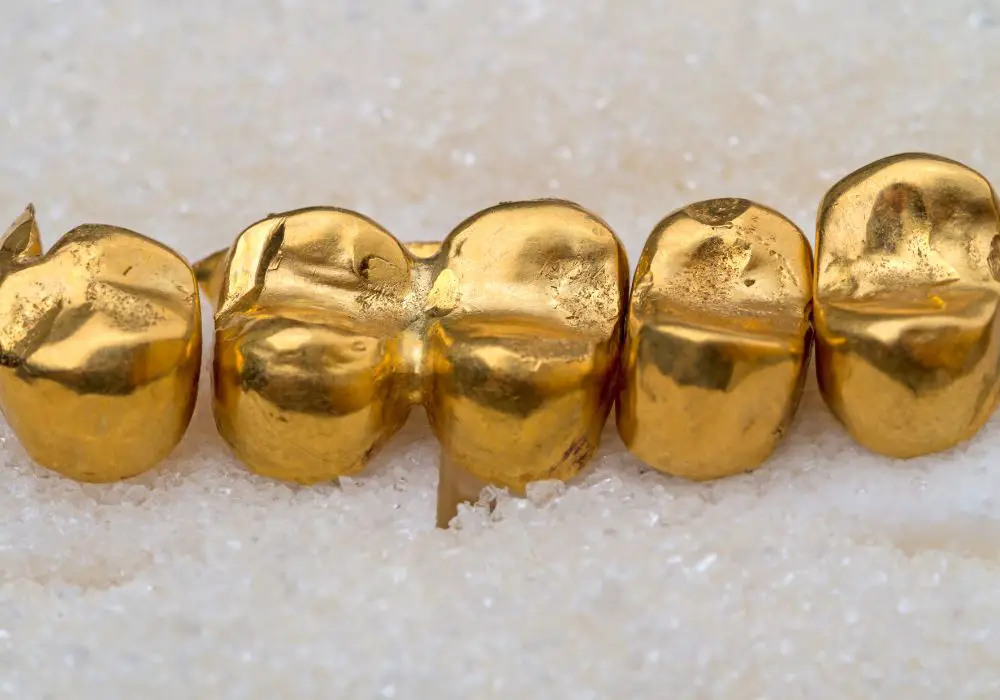
Gold teeth have been around for centuries, and their history is fascinating. In ancient Italy, around 700 B.C., the Etruscans employed the use of gold as dental crowns. Luxury and wealth were important to the Etruscans, and it’s evident in their teeth. Archaeologists have discovered sets of teeth wound with gold wire in central Italy that date back as far as the seventh century B.C. They were likely primitive dentures.
During the 1800s, dentists started to use gold as material for filling teeth. Gold fillings are thought to be older than amalgam fillings, and by extension, that makes them much older than composite or porcelain fillings.
In the 1920s, gold teeth became a symbol of wealth and status in America. New York’s governor at the time, Al Smith, had teeth “capped with gold,” according to Robert Caro’s “The Power Broker.”
Today, gold teeth are still popular in some cultures, particularly in hip-hop and rap music. Rappers often wear gold teeth as a symbol of success and wealth. Gold teeth are also used in some dental procedures, such as dental crowns, because of their durability and resistance to corrosion.
Overall, the history of gold teeth is a long and interesting one, dating back centuries and spanning different cultures and time periods.
The Dental Procedure
When you decide to get a gold tooth, you will need to undergo a dental procedure. This section will outline the process of getting a gold tooth, from the initial consultation to the molding process.
Consultation
The first step in getting a gold tooth is to schedule a consultation with a dentist. During this visit, the dentist will examine your teeth and determine if a gold tooth is the best option for you. They will also discuss the different types of gold teeth available, including implants, crowns, fillings, and grillz.
If you decide to move forward with a gold tooth, the dentist will take impressions of your teeth to create a mold. This mold will be used to create a custom-fitted gold tooth that matches the size and shape of your natural teeth.
Tooth Preparation
Once the mold is created, the dentist will prepare your tooth for the gold tooth. This involves removing any decay or damage from the tooth and shaping it to fit the gold tooth. In some cases, the dentist may need to build up the tooth with a filling material to ensure a proper fit.
Molding Process
After the tooth is prepared, the dentist will take another impression of your tooth to create a final mold for the gold tooth. This mold will be sent to a dental laboratory, where the gold tooth will be created.
The dental laboratory will use the mold to create a wax model of the gold tooth. This model will be used to create a mold for the gold tooth, which will then be cast in gold. Once the gold tooth is cast, it will be polished and finished to match the color and shine of your natural teeth.
In conclusion, getting a gold tooth involves a consultation with a dentist, tooth preparation, and a molding process. By following these steps, you can get a custom-fitted gold tooth that looks natural and beautiful.
Material Selection
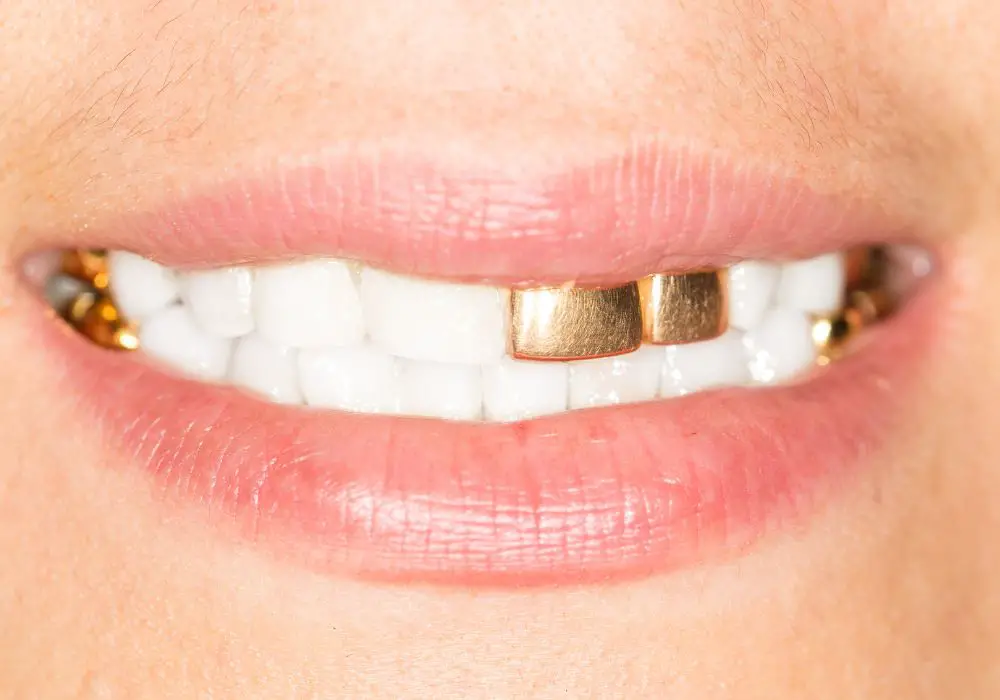
When it comes to making a gold tooth, the material selection process is crucial. There are several factors that need to be considered, such as the type and purity of gold.
Types of Gold
There are different types of gold that can be used for making a gold tooth, including yellow gold, white gold, and rose gold. Yellow gold is the most traditional and popular choice, while white gold is a more modern option that has become increasingly popular in recent years. Rose gold, on the other hand, has a pinkish hue that can add a unique touch to a gold tooth.
Each type of gold has its own characteristics and properties, which can affect the appearance and durability of the gold tooth. For example, yellow gold is more malleable and easier to work with, while white gold is more durable and resistant to tarnishing.
Purity of Gold
The purity of gold is measured in karats, with 24 karat gold being the purest form. However, pure gold is too soft to be used for making a gold tooth, so it is usually mixed with other metals to increase its strength and durability.
Gold teeth are typically made with 14 karat or 18 karat gold, which is mixed with other metals such as silver, copper, and nickel. The higher the karat, the more pure gold is used in the mixture.
The choice of karat can affect the color and durability of the gold tooth. For example, 14 karat gold is stronger and more durable than 18 karat gold, but it also has a slightly darker color due to the higher percentage of other metals in the mixture.
Overall, the type and purity of gold used for making a gold tooth depend on various factors such as personal preference, budget, and the specific requirements of the dental procedure. It is important to consult with a dental professional to determine the best type and purity of gold for your needs.
Manufacturing Process
Making a gold tooth involves several steps, including casting and polishing. Here’s a breakdown of the manufacturing process:
Casting
The first step in making a gold tooth is to create a mold of the tooth that needs to be replaced. This is typically done by taking an impression of the tooth and surrounding teeth. The mold is then sent to a dental laboratory where a technician will use a special wax to create a model of the tooth.
Next, a plaster-like material is poured over the wax model to create a negative mold. The mold is then heated to remove the wax, leaving behind a cavity that is the exact shape and size of the tooth.
Once the mold is ready, molten gold is poured into the cavity. The gold is allowed to cool and harden, and then the mold is broken away to reveal the gold tooth.
Polishing
After the gold tooth has been cast, it needs to be polished to give it a smooth, shiny finish. The technician will use a series of abrasive materials, such as sandpaper and polishing compounds, to remove any rough spots and scratches from the surface of the tooth.
The final step is to buff the tooth to a high shine using a soft cloth or polishing wheel. This gives the tooth a beautiful, mirror-like finish that is both durable and aesthetically pleasing.
And that’s it! With the casting and polishing process complete, your new gold tooth is ready to be installed by your dentist.
Installation Process
Once your gold tooth has been crafted, it’s time to have it installed. The installation process typically involves the following steps:
- Numbing the area: Your dentist will start by applying a local anesthetic to the area where the tooth will be installed. This will help to numb the area and prevent any pain or discomfort during the installation process.
- Preparing the tooth: Your dentist will then prepare the tooth by cleaning it and removing any debris or decayed material. They may also need to reshape the tooth to ensure a proper fit for the gold crown.
- Fitting the crown: The gold crown will then be fitted onto the prepared tooth. Your dentist will make any necessary adjustments to ensure a proper fit and bite.
- Cementing the crown: Once the crown is properly fitted, your dentist will cement it into place. They will use a special dental cement to ensure a strong and durable bond between the crown and your tooth.
- Polishing the crown: Finally, your dentist will polish the gold crown to give it a smooth and shiny finish. This will help to ensure that the crown looks and feels natural in your mouth.
Overall, the installation process for a gold tooth is relatively simple and straightforward. With proper care and maintenance, your gold tooth can last for many years and provide you with a beautiful and functional smile.
Care and Maintenance
Once you have a gold tooth, it’s important to take care of it properly to ensure it lasts as long as possible. Here are some tips for caring and maintaining your gold tooth:
Brush and Floss Regularly
Brush your teeth at least twice a day with a soft-bristled toothbrush and fluoride toothpaste. Floss between your teeth at least once a day to remove plaque and debris buildup. This can keep your gold tooth, teeth, and gums healthy.
Avoid Hard and Sticky Foods
Avoid biting down on hard foods like ice, hard candy, and popcorn kernels, as well as sticky foods like caramel and taffy. These foods can damage your gold tooth or even dislodge it.
Don’t Use Your Teeth as Tools
Don’t use your gold tooth or any of your teeth to open packages, bottles, or anything else. This can damage your teeth and even cause them to crack or break.
Visit Your Dentist Regularly
Visit your dentist at least twice a year for cleanings and checkups. Your dentist can check the condition of your gold tooth and make sure it’s still in good shape.
Consider a Mouthguard
If you play sports or grind your teeth at night, consider wearing a mouthguard to protect your gold tooth and your other teeth.
By following these simple tips, you can keep your gold tooth looking and feeling great for years to come.
Potential Risks and Complications
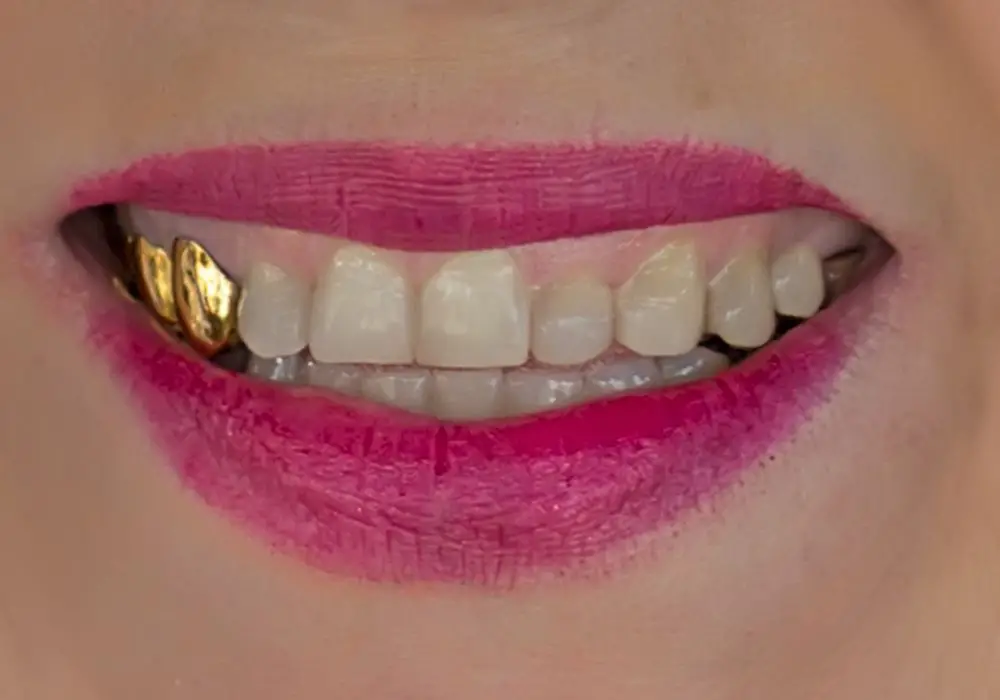
While gold teeth may seem like a fashionable choice, it’s essential to understand that they come with potential risks and complications. Here are a few things to keep in mind:
Allergic Reactions
Some people may have an allergic reaction to gold. If you’re allergic to gold, you may experience symptoms such as skin rashes, hives, or itching. If you’re unsure whether you’re allergic to gold, your dentist may recommend a patch test to determine if you’re allergic.
Damage to Teeth and Gums
The process of getting a gold tooth involves removing some of the enamel from your teeth. This can make your teeth more susceptible to decay and damage. Additionally, if the gold tooth is not fitted correctly, it can cause irritation and damage to your gums.
Cost
Gold teeth can be expensive, and the cost can vary depending on the type of gold used and the complexity of the procedure. If you’re considering getting a gold tooth, it’s essential to discuss the costs with your dentist beforehand to ensure that you can afford the procedure.
Maintenance
Gold teeth require regular maintenance to keep them clean and in good condition. This can involve regular brushing and flossing, as well as regular visits to the dentist for cleanings and checkups.
In summary, while gold teeth can be a fashionable and unique choice, they come with potential risks and complications that you should be aware of before making a decision. If you’re considering getting a gold tooth, it’s essential to discuss the risks and costs with your dentist to ensure that it’s the right choice for you.
Frequently Asked Questions
How long does it take to make a gold tooth?
The time it takes to make a gold tooth can vary depending on the complexity of the tooth and the skill of the dentist. In general, it takes about two to three weeks to create a custom gold tooth. This includes the time it takes to make a mold of your tooth, create the gold crown, and then fit and attach the crown to your tooth.
Does getting a gold tooth hurt?
No, getting a gold tooth should not hurt. The process is similar to getting a regular dental crown. Your dentist will numb the area around the tooth and then prepare the tooth by removing any decay or damage. They will then take an impression of the tooth and use this to create a custom gold crown that fits over the prepared tooth. Once the crown is ready, your dentist will attach it to your tooth using a dental adhesive.
What is the process for making a gold tooth?
The process for making a gold tooth involves several steps. First, your dentist will prepare the tooth by removing any decay or damage. They will then take an impression of the tooth using a dental mold. This mold is used to create a custom gold crown that fits over the prepared tooth. Once the crown is ready, your dentist will attach it to your tooth using a dental adhesive.
Where can I get a permanent gold tooth?
You can get a permanent gold tooth from a licensed dentist who specializes in restorative dentistry. It’s important to choose a dentist who has experience creating custom gold crowns to ensure the best results.
How long does a gold tooth last?
A gold tooth can last for many years with proper care and maintenance. It’s important to brush and floss regularly and visit your dentist for regular checkups to ensure the longevity of your gold tooth.
What is the cost of a gold tooth?
The cost of a gold tooth can vary depending on several factors, including the complexity of the tooth, the skill of the dentist, and the location of the dental practice. In general, a gold tooth can cost anywhere from $500 to $3,000. It’s important to discuss the cost with your dentist before proceeding with the procedure.



